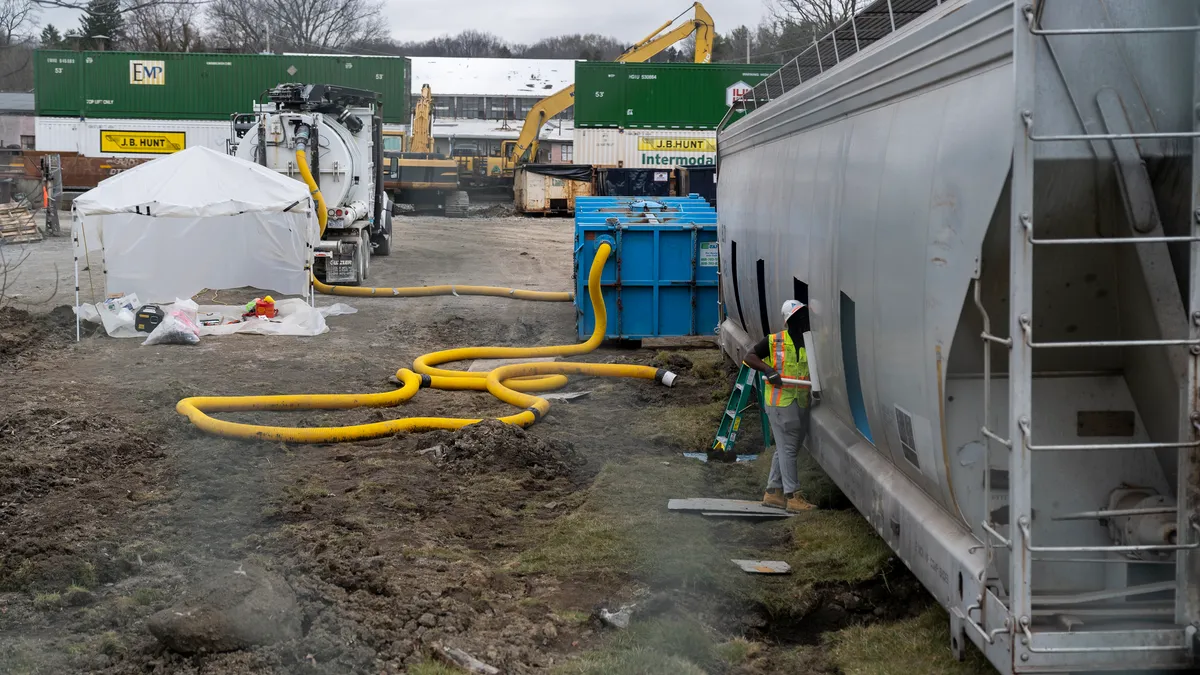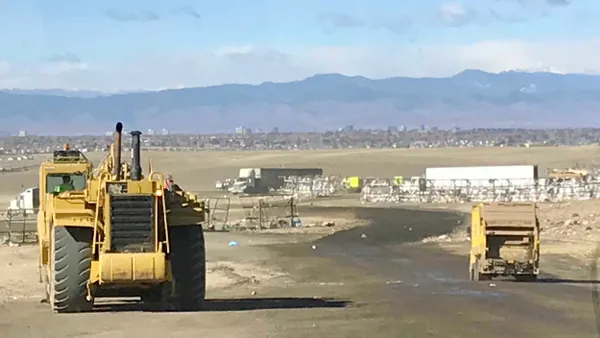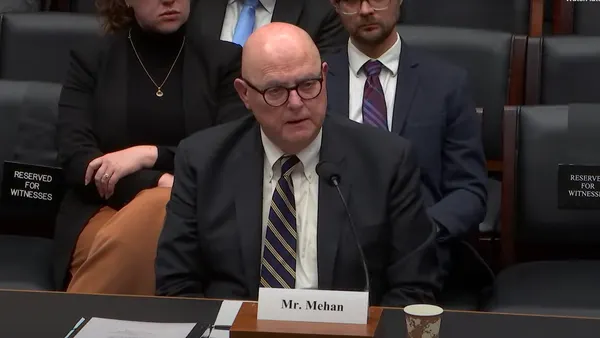Some of the industry’s largest waste companies are now involved in efforts to clean up contaminated soil and water from a train derailment in East Palestine, Ohio, with waste going to multiple states under the direction of the U.S. EPA.
Greenrock Strategies and Arcadis, the environmental cleanup consultants for the job, have contracted with waste management companies permitted to treat and dispose of hazardous waste. Those include WM, Republic, US Ecology (a Republic subsidiary), Clean Harbors, Heritage Environmental Services and Ross Environmental Services, said David Case, general counsel for the Environmental Technology Council. ETC is a trade association representing companies that manage hazardous waste.
A Norfolk Southern Railway train carrying toxic chemicals like vinyl chloride derailed on Feb. 3, prompting multiple agencies and contractors to coordinate environmental cleanups. Facilities permitted to accept hazardous waste will mostly be accepting soil, gravel and contaminated water, as well as some debris such as wood and plastic, Case said in an email. That material was excavated from the area where chemicals from the train were burned in a controlled release after the train derailment, he said.
Some waste companies also found themselves in the spotlight after the train derailment once residents learned that nearby hazardous waste sites would accept some of the contaminated material. Last week, lawmakers and local residents protested outside a Republic landfill in Romulus, Michigan, where some of the material was shipped, the Detroit News reported.
Protestors at the Republic site included members of the Conference of Western Wayne, an association of 18 Michigan mayors and township supervisors, who said Michigan should not become a “dumping ground” for Ohio’s waste. Republic has not yet responded to a request for comment.
The U.S. EPA has since halted further shipments of hazardous waste from the train derailment into Michigan, after numerous local, state and federal officials protested the material crossing state lines, Detroit News reported. David Glaab, a township supervisor and chairman of the conference, told the Detroit News the group has called on the U.S. EPA “to publicly commit that there will be a permanent halt and that this hazardous material will never be sent to Wayne County.”
The U.S. EPA is directing material to locations in Grafton, Ohio and Roachdale, Indiana. Those facilities are in compliance with EPA standards, Regional Administrator Debra Shore told WESA.
In addition to the material shipped to Republic’s landfill, about six truckloads of material were also destined for a US Ecology landfill near Belleville, MLive reported.
Michigan Department of Environment, Great Lakes, and Energy licenses, inspects and oversees hazardous waste disposal facilities, but it does not have the authority to stop toxic waste from being transported into the state, MLive reported. Norfolk Southern chose the disposal sites, the agency said.
A shipment of about 500,000 gallons of contaminated water was also sent for disposal near Houston at Texas Molecular, a deep well injection facility recently acquired by VLS Environmental Solutions, according to the Associated Press. Nearby residents voiced concerns about toxic material being driven through their neighborhoods.
Residents and officials in multiple states have been particularly concerned that the waste contains vinyl chloride, a carcinogen. Case said vinyl chloride concentrations in the waste shipments could range from 40-100 parts per million, which he said “are typical of the hazardous wastes that are disposed at waste management facilities every day.”
It’s unclear how long waste companies will be involved in managing waste from this particular derailment, but Case said the companies are coordinating closely with the Ohio EPA. “Waste management firms want to help the East Palestine community by removing the soil waste quickly for safe disposal,” he said.
For this type of soil and debris, Case said high-temperature incineration is the “best available” technology because it’s designed to destroy hazardous organic constituents. Incinerators permitted under the Resource Conservation and Recovery Act must meet EPA air standards to avoid contaminants from being released into the environment. Typically, any inert residuals left over from the incineration process then go to a Subtitle C hazardous waste landfill, he said.
U.S. EPA Administrator Michael Regan has twice visted East Palestine and will return again today, according to an EPA press release.










